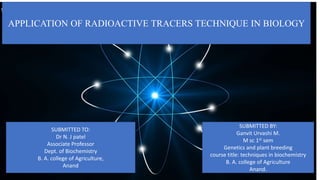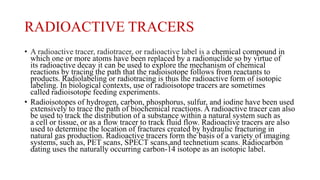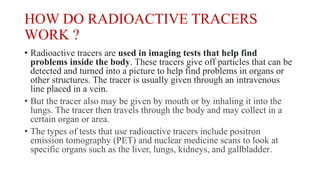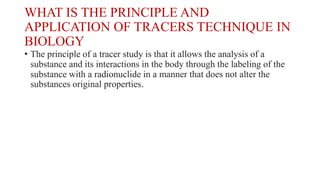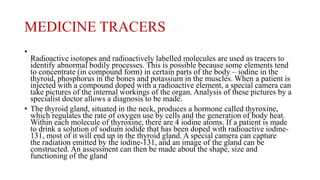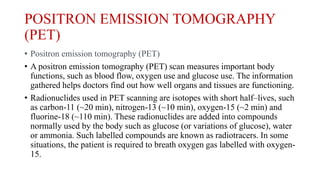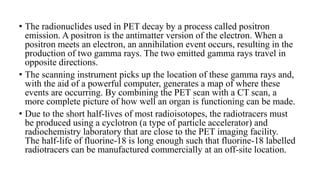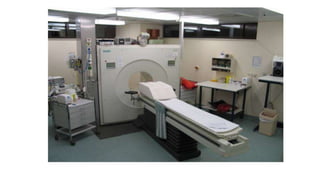The document discusses the application of radioactive tracers in biology. It provides details on how radioactive tracers work by giving off detectable particles that can be used to create images of organs and structures in the body. The document then discusses specific applications of radioactive tracers in metabolism research, medicine, hydraulic fracturing, and imaging techniques like PET scans. It also discusses how tracers can be used to study isolated organs/tissues, mutant strains of microorganisms, and track biochemical pathways.
